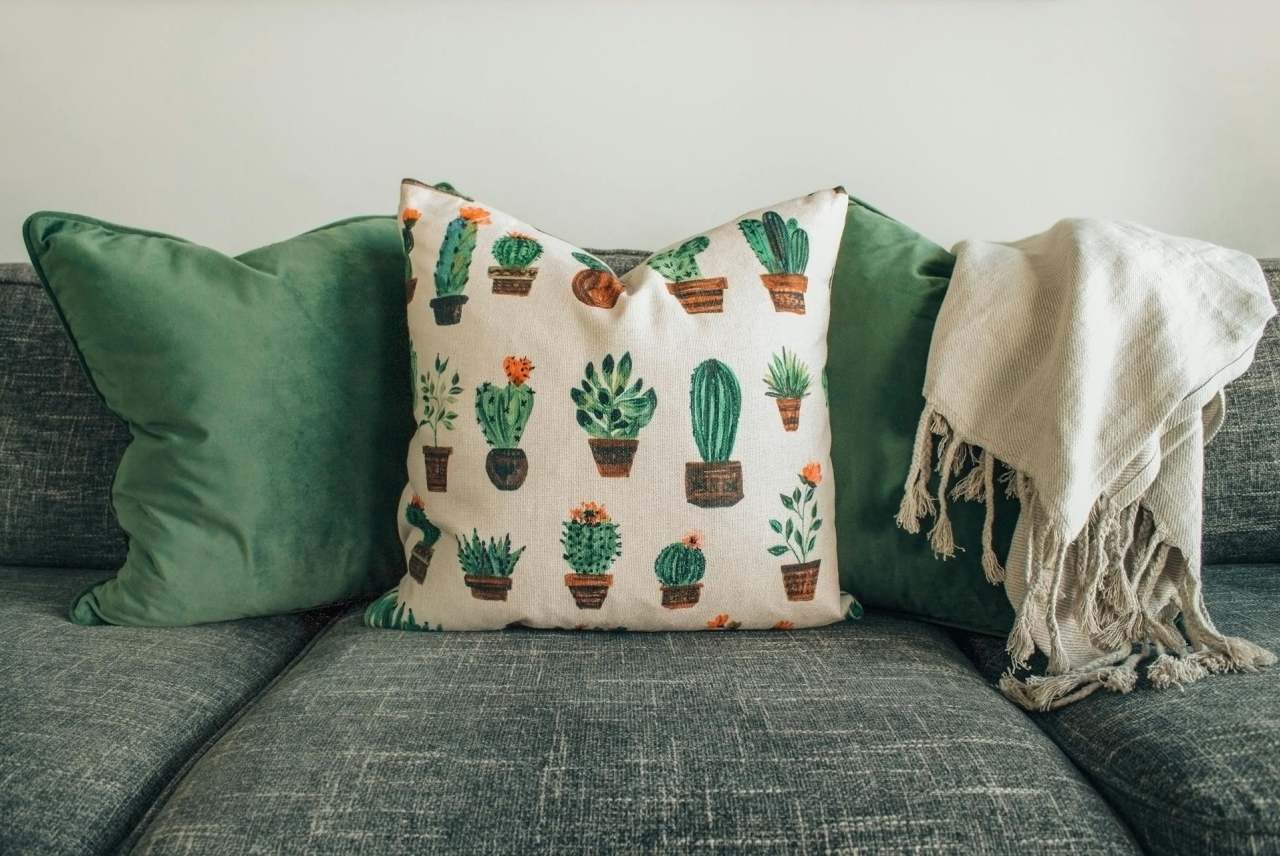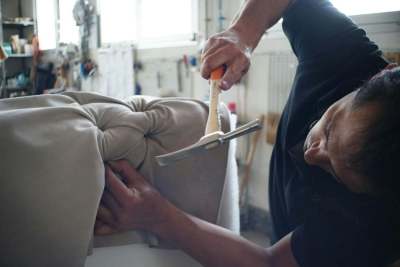2. Upcycle your furniture
Over time, your furniture may look a bit worse for wear or no longer be to your taste. Often, it is possible to revive it through simple upcycles - either using parts to create something else, or give it a makeover.
An easy option is waxing wooden surfaces. It will give some extra shine and protection.
Painting wooden furniture can also be great. Clean the item and sand off any flakes of old paint. (If in doubt follow a video on Youtube, or a guide online.) If your item is made from nice quality wood, you could also sand or strip back the existing varnish or paint, and re-varnish or retreat the wood.
It’s important to have good ventilation and use protective gloves and goggles if working with chemicals. You may want to look for a local course to learn how to upcycle properly, if you’re using toxic chemicals.
For those feeling a bit braver, you could also experiment in re-upholstering things like chairs or a headboard for your bed at home. You might need to invest in tools like a staple gun for this, and can follow a tutorial online. The Fabric Outlet, which has stores in Liverpool and Newcastle, sells end of rolls for curtain and upholstery fabrics, so can be a great place to get high quality bargain options. If you have a local fabric or haberdashery shop you could ask if they sell similar off cuts.
For professional jobs, look online for someone offering furniture restoration near you. This won’t necessarily be cheap, but supports a local craftsperson. It will often still be cheaper than buying something new, and gives you lots of choice over things like the print of the fabric.
3. Sell your furniture
If you want to sell your furniture, some of the websites listed earlier can be useful options such as eBay, Gumtree, Facebook Marketplace and Preloved.
Each one will have slightly different terms, for example, eBay takes on average between 10–15% of the final sale price, and Facebook Marketplace charges around 5%. Gumtree is free and is cash on collection, but that also means people don’t always show up. Preloved is free for sellers, but does charge an annual fee if you want to upload videos or be prioritised in listings.
You can also sell items at auctions as well.
4. Donate your furniture
Freecycle, Freegle, Freeloved (part of the Preloved website) and Olio are all websites that allow you to give items away for free. You may actually save money doing this: you won’t have to pay for a van or petrol for moving or getting rid of big pieces.
It can be particularly useful if you’re in a rush to empty a house or flat, as lots of items go within a couple of days. Unfortunately, collectors occasionally won’t show up, so it’s worth factoring this risk into your planning.
Charity shops are a great option for getting rid of your old furniture. Phone ahead of time to check they are accepting items, particularly for larger pieces, as they may not always have space. Lots of charity shops can pick up items that you wish to donate, especially if you’re getting rid of multiple things.
Local community enterprises may also take items for free, and if your local college runs courses in upholstery, home furnishings or carpentry, they may even be interested in taking items that the students can use for practice.
5. Recycle your furniture
If an item really is at the end of its life, find out how to recycle it in your area using the Recycle Now website.
Usually, you will have to take items to a local recycling or waste collection centre. Lots of council waste collections now also have shops for items that are still in reasonable condition, so it’s worth checking on your council website and speaking to someone at the site if you think it might just about have some life left.
Some councils offer collections on big items. You may have to book this ten days or two weeks ahead of time, and there is a limit on how many items they will take each year. Check on your council website.






